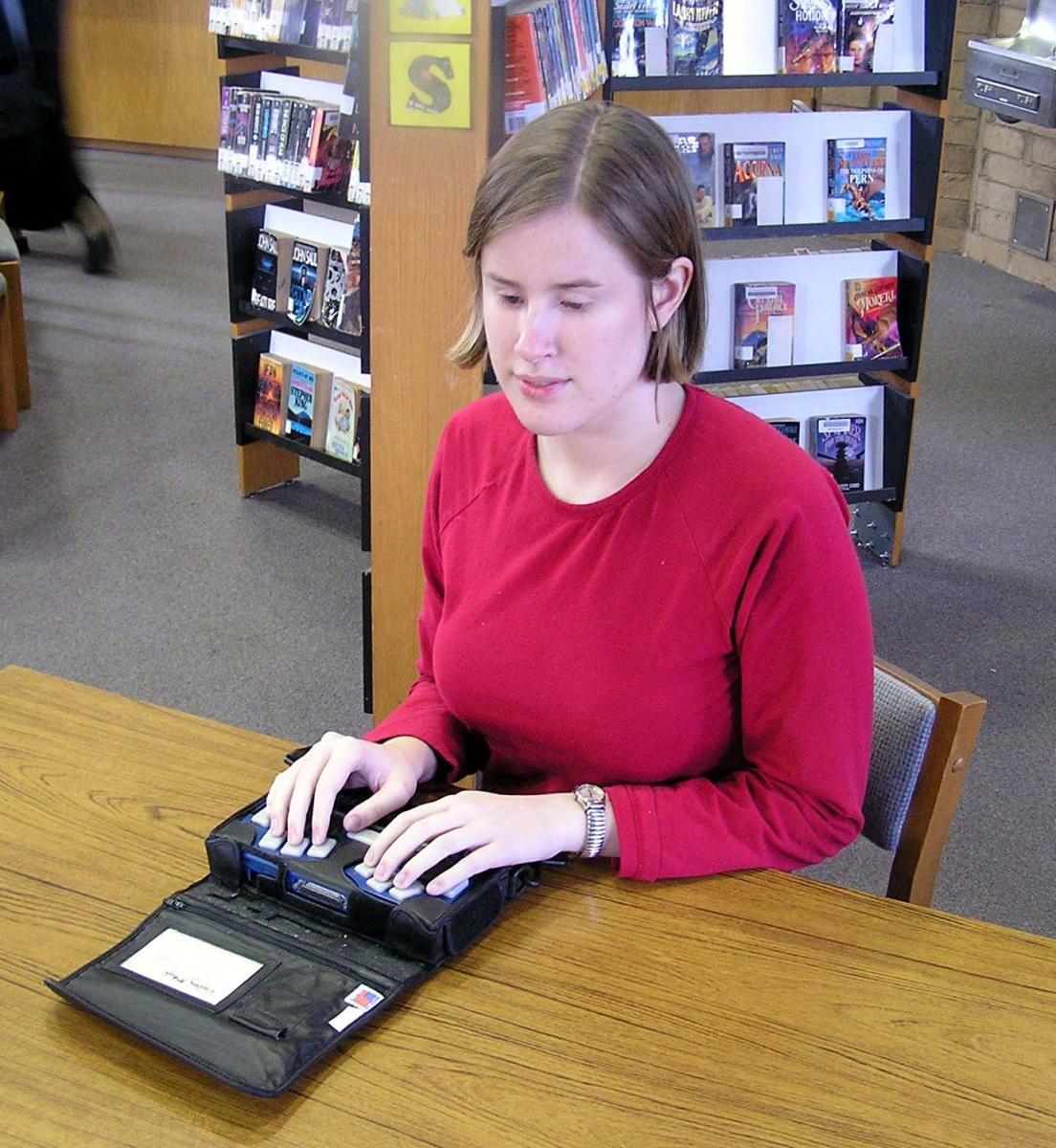Today you see people everywhere using PDAs (Personal Digital Assistants) such as Palm Pilots™. Think of a portable note taking device as a talking PDA for a person who is visually impaired.

Taking notes during class and reading books downloaded from the Internet are two ways this high school sophomore uses her portable note taking device.
Notice in the picture that there are six large keys on the portable note taking device. These keys correspond to the 6 dots in the braille cell. Keyboards are also available that are like the computer keyboard.
Many portable note taking devices have a refreshable braille display built into them. These are small pins that raise and lower to allow the user to read in braille what is being accessed in the device.
Portable note taking devices are continually being refined. Potential features include a calendar, address book, calculator, word processing program, digital book reader, global positioning and much more. The devices can be connected to a computer and print or braille can be produced from them. These devices are portable, weighing only a few pounds. There is large range of prices for these devices based on their features.
Children younger than 1st grade are not typically exposed to portable note taking devices. As with other aspects of learning braille, guided exposure is necessary before a child can be independent with a device. Most children do not begin to use a portable note taking device independently until they reach the upper elementary grades.
The Braille Note and the Pac Mate are two portable note takers seen in the schools.
Braille embossers are like printers; however, braille embossers produce braille.
- Dots for Families
- What I Shared with a Parent who Didn’t Know Where to Start
- Making Books Meaningful and Motivational
- Introduction to Braille Writing
- Portable Note Taking Devices
- Slate and Stylus
- Braille Embossers
- Braille Lessons in UEB
- How to Download and Use Perky Duck
- Families Learning Braille
- Technology for Children who are Visually Impaired
- Categories of Assistive Technology
- Selecting Computer Software
- Who’s Who in Braille
- The Story of Louis Braille
- Stories of Braille Users
- Anna’s Story
- Haylee’s Story
- An Update on Dots for Families and Stories of Braille Users
- Developing Children’s Braille and Literacy Skills
- Organizations and Companies



